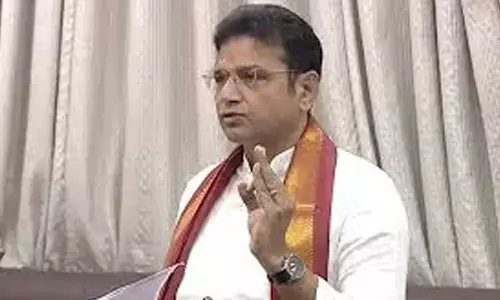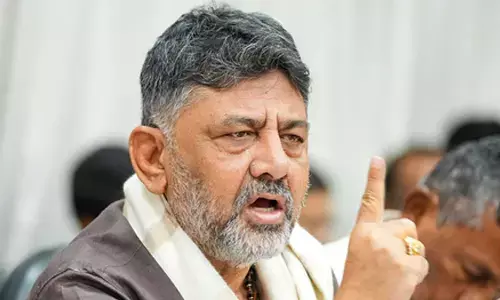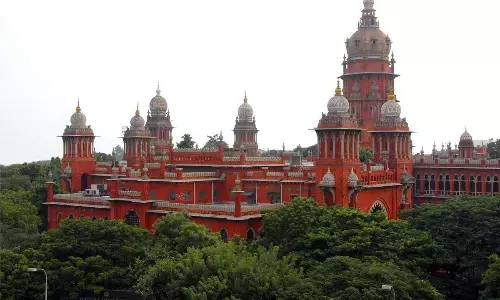Remembering Hyderabad Liberation Day

Hyderabad Liberation Day 2025: History, Significance & Operation Polo
A most powerful Marxist quote and very relevant for many struggles says "social conditions determine social consciousness"
A most powerful Marxist quote and very relevant for many struggles says "social conditions determine social consciousness". It tells us that if you put a population under conditions of extreme inequality and injustice for sufficient time, then they will eventually rise up. More recently, social consciousness is linked to the collective self-awareness and experience of collectively shared social identity.
By the experience of collectively shared social identity, individuals may experience social unity. Social consciousness may also stimulate working towards a common goal. We have seen such collective self-awareness in the historical Telangana Rebellion against feudal Nizam of erstwhile Hyderabad State and in the Telangana movement for a separate state in the recent past.
The uniqueness of Hyderabad Liberation Day of September 17 has to be seen in larger context today should we make an attempt to objectively understand the causality effect underlying it. The Telangana Rebellion against Nizam represents the culmination of efforts by communist and socialist parties in the first few decades of the communist movement.
The untiring efforts organising and mobilising the peasantry against grave injustices represented a break away from traditionally more moderate reformist movements within the peasantry in pre independent India. Although the exact significance and value of the Telangana movement is fiercely debated, one cannot deny the role of the movement in bringing the question of the peasantry to the fore of the countries agenda as well as for the communist movement; in actively organising people against caste injustices; and in radically redefining the need for strong organizational structure, which was a key factor in the growth of the movement elsewhere in the country.
Apart from Telangana Rebellion (1946–51), other historic movements were Tebagha movement (1946–1949), Kagodu Satyagraha (1951), Naxalbari Movement (1967) and Lalgarh movement (2009). Andhra Mahasabha: Banner of Telangana Armed Struggle.
Before Indian Independence, Hyderabad state was a princely state within the territory of British India, comprised of three linguistic regions: the Telugu-speaking Telangana area (including the capital city, Hyderabad), the Marathi-speaking Marathwada area, and a small Kannada-speaking area.
Telangana occupied 50 per cent of the state's area. The nature of land ownership in the region was extremely exploitative. Forty per cent of the land was either directly owned by the Nizam or given by the Nizam to elites in the form of jagirs (special tenures). The remaining sixty per cent was under the government's land revenue system, which relied on powerful landlords and gave no legal rights or security from eviction to the people actually cultivating the land. The vetti (forced labour) system consisted of work performed by lower castes at the will of the landlord. Another practice was the prevalence of keeping girls as 'slaves' in landlords' houses, used by landlords as concubines.
Formed in 1928, Andhra Mahasabha was organised under the leadership of Madapati Hanumantha Rao, Suravaram Pratapa Reddy and others. In conferences, it used to pass resolutions demanding certain reforms in the administrative structure, for more schools, for certain concessions for the landed gentry, for certain civil liberties, but did not try to mobilise the people and launch struggles against the oppressors or against the Nizam'sGovernment.
But it became in those wretched and tremendously oppressive conditions in Hyderabad state, a forum, a focal point for the rising democratic aspirations of the people. It is this background and the continued resistance of the oppressed which culminated into the historic Telangana armed struggle against the Nizam. It was the Communist Party of India which has organised this peasant led armed rebellion against thecruel rule of Nizam landlords under the banner of Andhra Mahasabha.
Few among the well-known individuals at the forefront of the movement were Ravi Narayana Reddy, Makhdoom Mohiuddin, Hassan Nasir, Bhimreddy Narasimha Reddy, Mallu Venkata Narasimha Reddy, Mallu Swarajyam, Arutla Ramchandra Reddy and his wife Arutla Kamala Devi. As part of this historic rebellion from 1946 to 1951, lakhs of people in Telangana resisted the brutal exploitation of Nizam and his razakars as well as jagirdars, deshmukhs and deshpandeys etc.
About 60,000 people left their homes and joined activelyas leaders of the movement and took to the arms to wage an armed struggle against Nizam and his Razakars. According to the official records, 35,000 people were arrested in Hyderabad State and put to inhuman torture. About a lakh bogus cases were booked against the participants of the movement. In spite of this upsurge, Nizam continued his brutal oppression and was in no way ready to recognise independence to India in 1947. As part of this historic struggle to liberate the Hyderabad state, 4500 people sacrificed their lives.
'Police Action' by the Indian Army
On September 13, 1948, in a 'police action' aimed at countering the violence in Hyderabad, the Indian Army marched into the state. Within a week's time, the Nizam, the razakar squads and the police surrendered.
Following the capture of the razakars, a military administration was set up under General J.N. Chaudhuri, and a military offensive was directed at the peasant rebels in the Telangana region. During the next three years, in more than 2,000 villages about 300,000 of people were tortured, about 50,000 were arrested and kept in detention camps for a few days to a few months.
More than 5,000 were imprisoned for years. The Indian Army's presence transformed the struggle, as it was no more a liberation struggle against the Nizam, but rather against the army of the newly-formed Indian Government.
In an effort to co-opt peasant support, the military administration issued the Jagir Abolition Regulation (August 1949) and set up an Agrarian Enquiry Committee to recommend comprehensive land reform legislation. It was clear, though, whose side the state was on; within two weeks the landlords started returning and regaining their lost land.
General J.N. Chaudhuri, the military governor made a statement from Hyderabad, calling all communists to surrender within a week, failing which they would be exterminated.
A debate ensued within the CPI. Certain sections, predominantly led by Ravi Narayana Reddy, felt that giving up arms was essential as India became independent, Nizam's rule came to an end and people have welcomed this change. Other sections were skeptical, as they felt that giving up arms could lead to loss of gains and appear as a betrayal of the people.
However, due to severe military repression leading to a huge loss of life the movement has weakened leading to the CPI formally declaring the struggle as withdrawn on October 21, 1951.
Political legitimacy and self-respect
One of the basic commitments and also political legitimacy reflects in recognition and honouring of September 17, 1948 by the central and the state governments. Celebrating 17th September would therefore honour and respect the sacrifices of the people for the liberation struggle of Hyderabad State and at the same time reaffirm our political commitment to complete the unfinished agenda for political, economic, and cultural emancipation within our own Telangana state.
It would also give a befitting reply to all forces trying to distort the history by zeroing the Hyderabad liberation as a fight between Nizams, Muslims and rest Hindu population. It should be mentioned here that in the first general elections to the Parliament in 1952, the leader of the Telangana armed struggle Ravi Narayana Reddy won his Nalgonda parliamentary seat with highest majority surpassing even Pandit Jawahar Lal Nehru.
It is very interesting to note and should be given due importance during discussions on September 17th that the people of Telangana and their movement for a separate state saw many facets of socio-economic, cultural and political emancipation aspirations deriving right from anti-feudal historic Telangana armed struggle in Hyderabad state including equally important other people's movements such as farmers, students, civil liberties, women, Dalit and Adivasis in the past 70 years.
(The author is TRS MLA, Vemulawada, Telangana Assembly)















